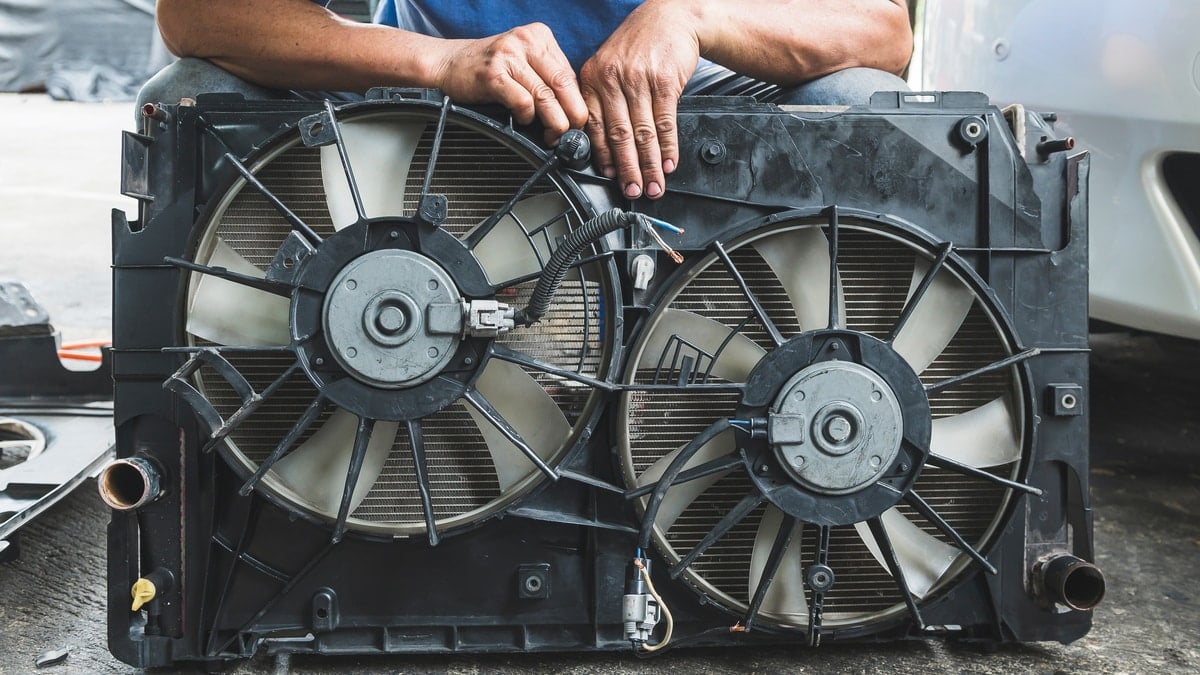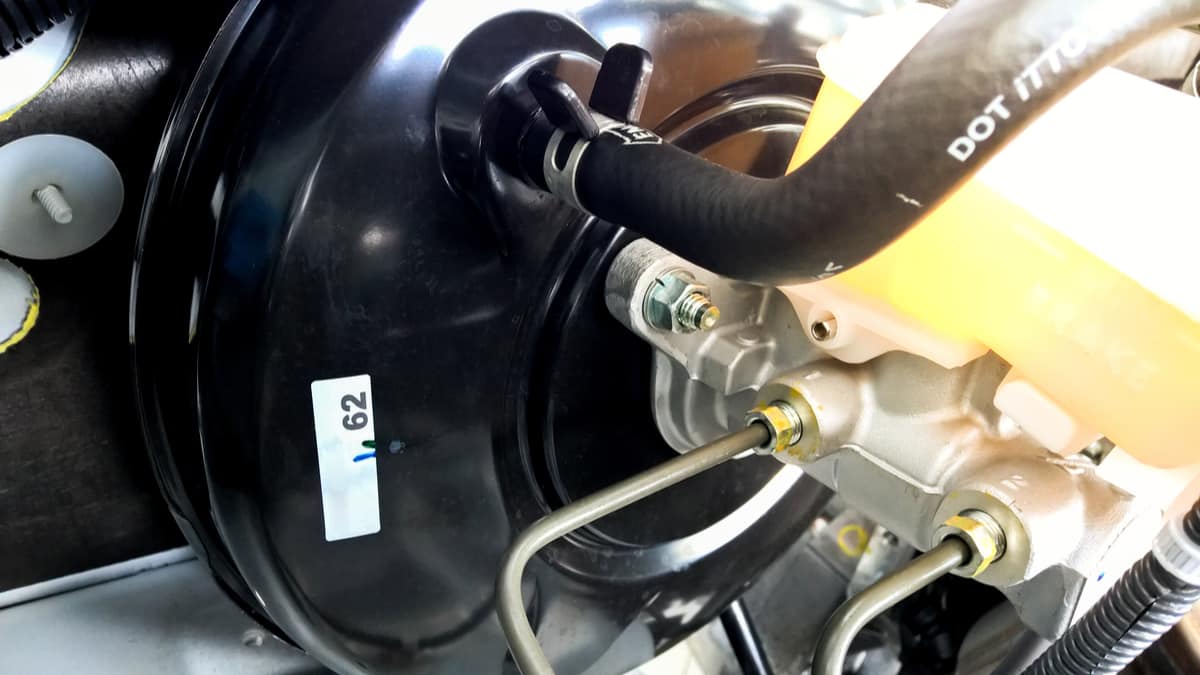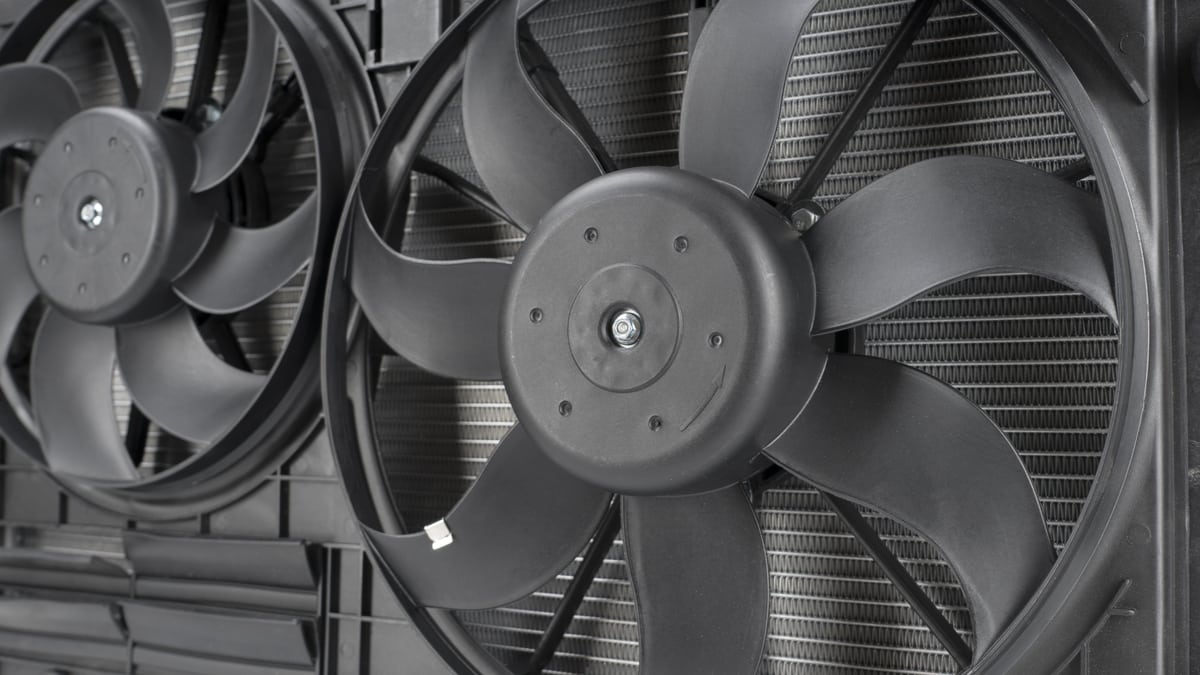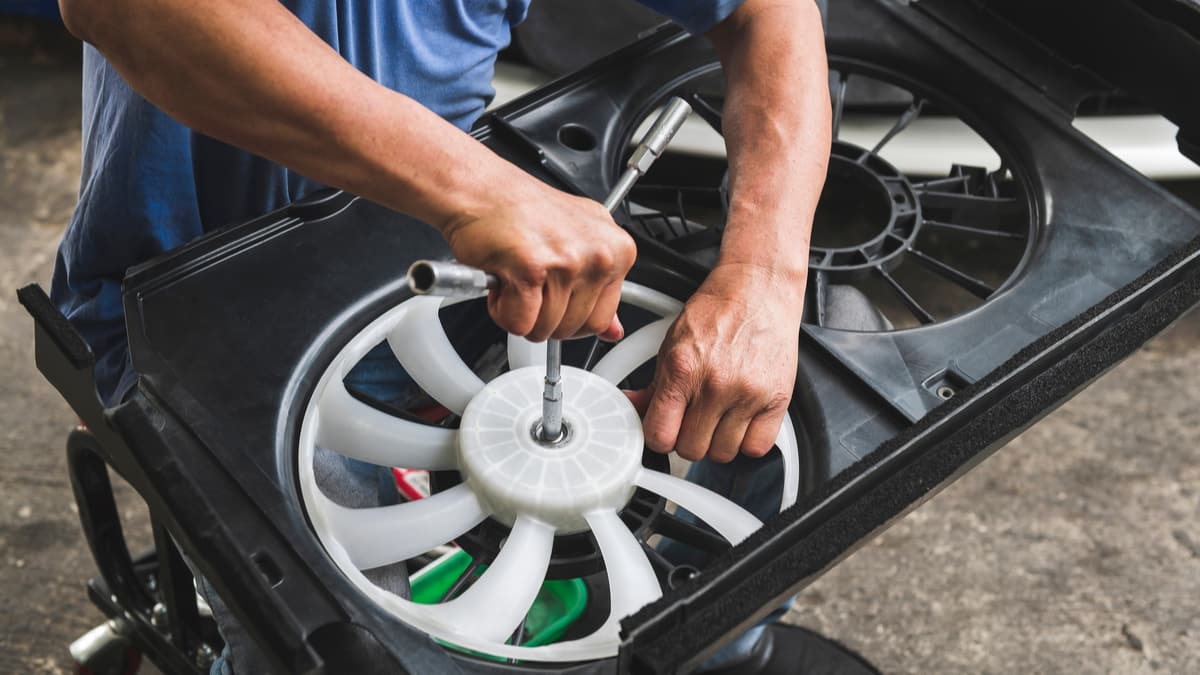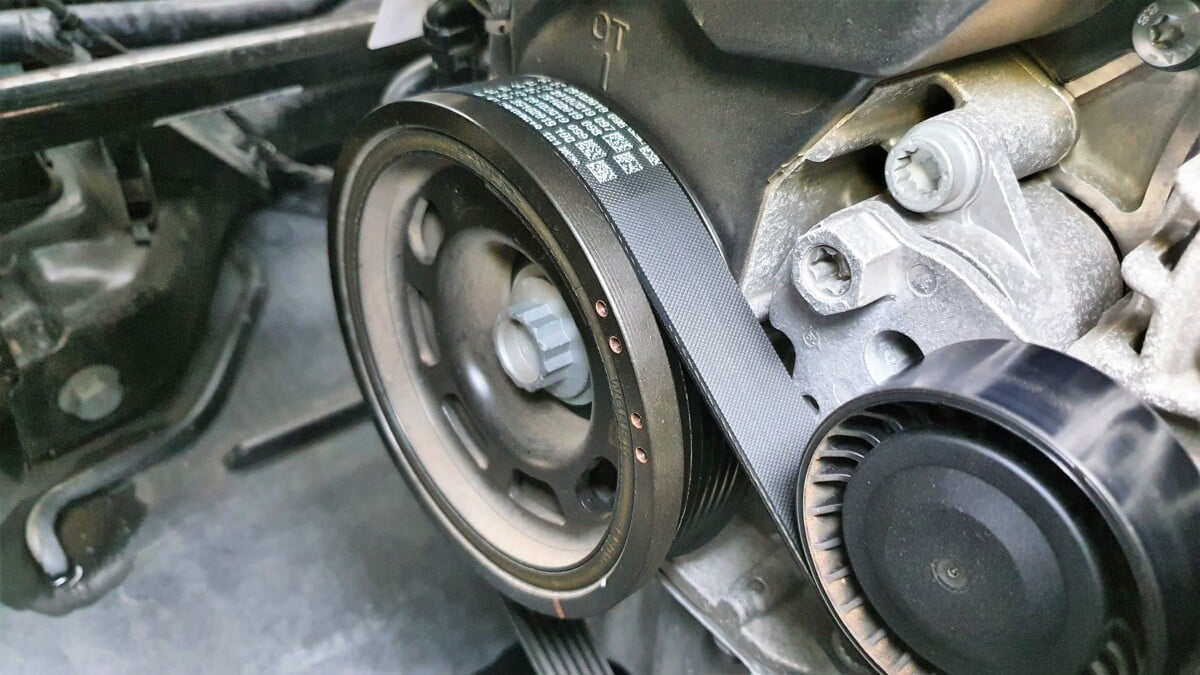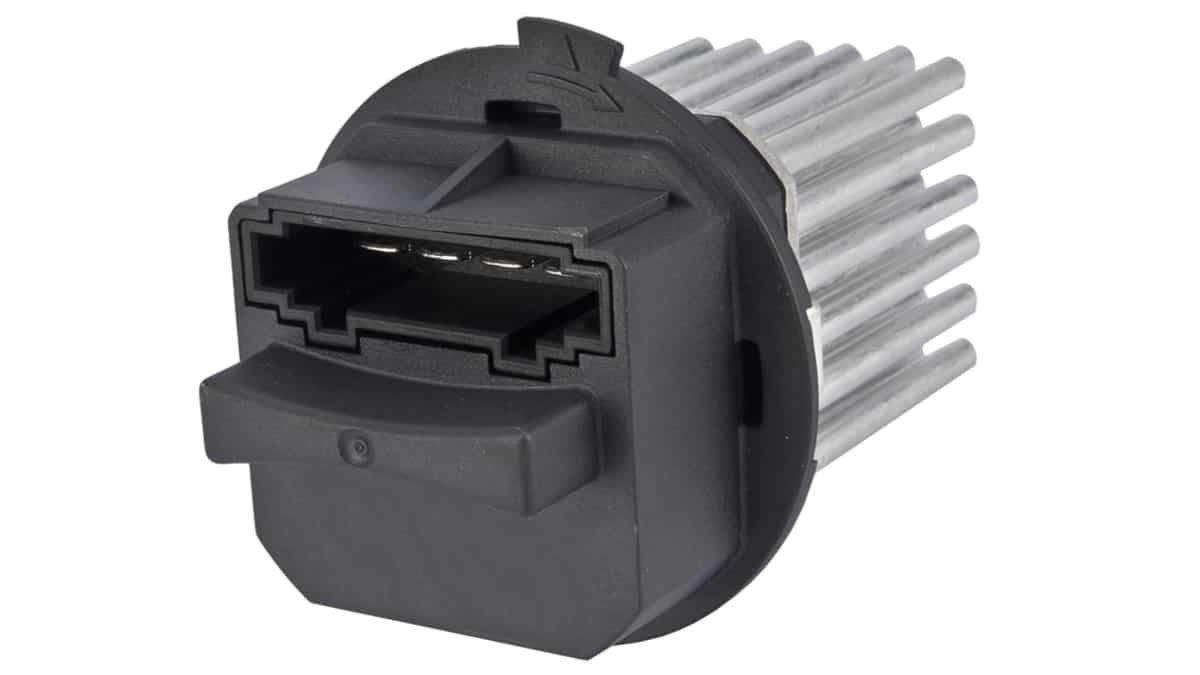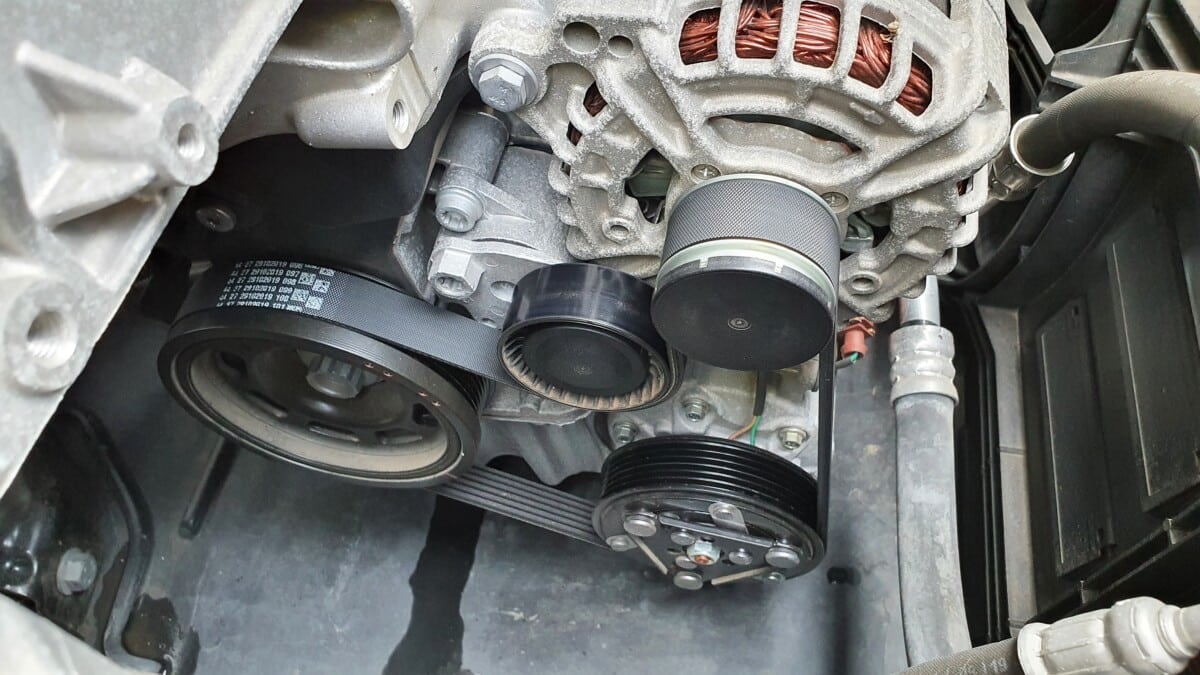The car radiator is a vital component needed to cool the engine. Part of the reason the radiator can cool the hot temperatures is due to the fan that’s installed. If you want to avoid an overheating engine, it’s important to know the symptoms of a bad radiator fan.
In this guide, we review the top bad radiator fan symptoms, look at its location and discuss its function. We also answer your biggest questions, show you how to test the fan and give you an average replacement cost.
Symptoms Of A Bad Radiator Fan
When the radiator fan fails, it may not activate at all. It can also cause the fuse to blow because of an electrical malfunction. Aside from that, the vehicle may overheat, you could notice poor air conditioning performance and hear whirring noises when the radiator fan is failing.
Let’s examine these five possibilities a little closer.
1. Radiator Fan Doesn’t Come On
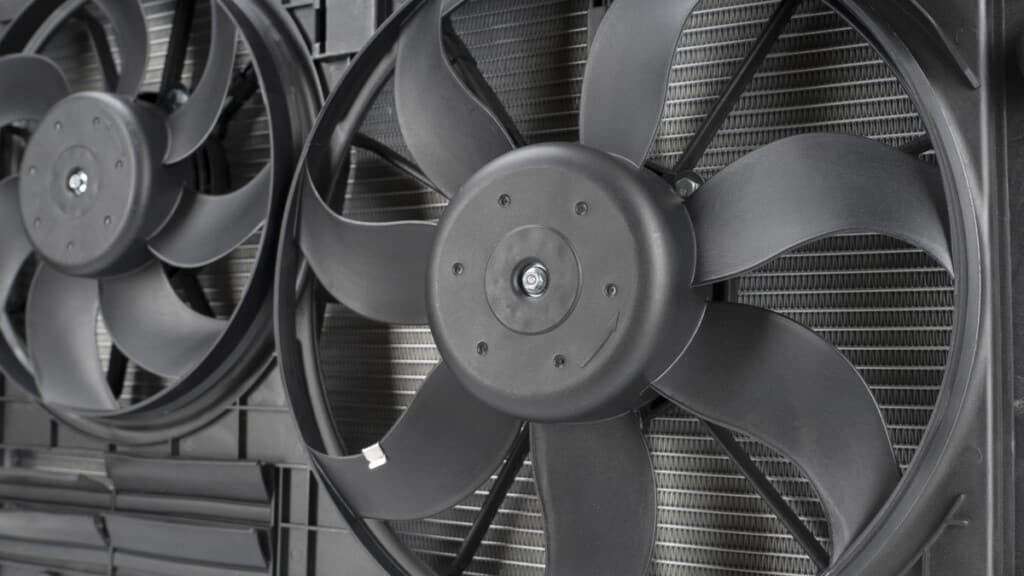
Most commonly, the faulty fan won’t enable when it’s broken. This is caused by the motor burning out, rendering the fan useless.
As a car needs an engine, the radiator fan needs a functioning motor. Otherwise, there’s nothing to make the fan blades spin. This symptom can also be caused by a faulty relay or a poor electrical connection.
2. Blown Radiator Fan Fuse
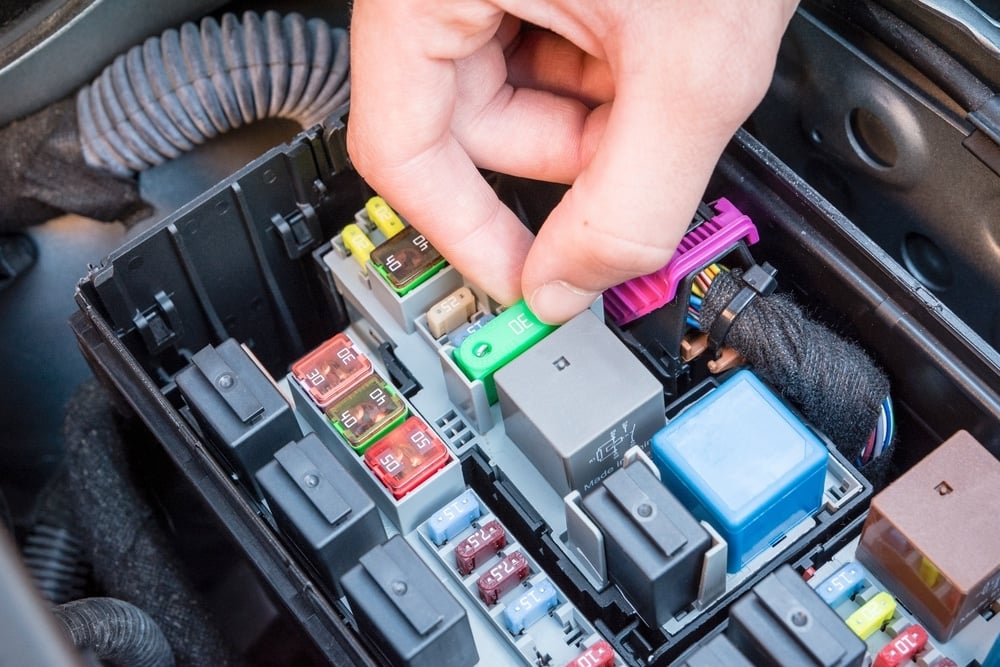
The fan also runs through a fuse that’s meant to protect it from electrical overload. If there is a spike in amperage or the motor is failing, the fuse could blow.
You can replace the fuse and hope it was just a glitch. However, if the fuse continues to blow, there’s a bigger problem occurring.
3. Vehicle Overheating

The purpose of the radiator fan is to cool the vehicle. When a particular temperature is reached, the cooling fans come on automatically. If the cooling motors fail, the fans won’t be able to turn on and the temperature continues to rise. What you are left with is an overheating engine.
Your car should have a temperature gauge or a warning light that tells you when the engine is too hot. Once you see the engine overheating, you should stop driving the vehicle. Continuing to drive in this condition can cause permanent motor damage, leading to costly repair bills.
The trouble with using this symptom alone to determine that the radiator fan is bad is that the engine can overheat because of many different problems. It can even overheat when the fans are working as intended. That’s why it’s so important to diagnose the problem before replacing any parts.
4. Poor A/C Performance
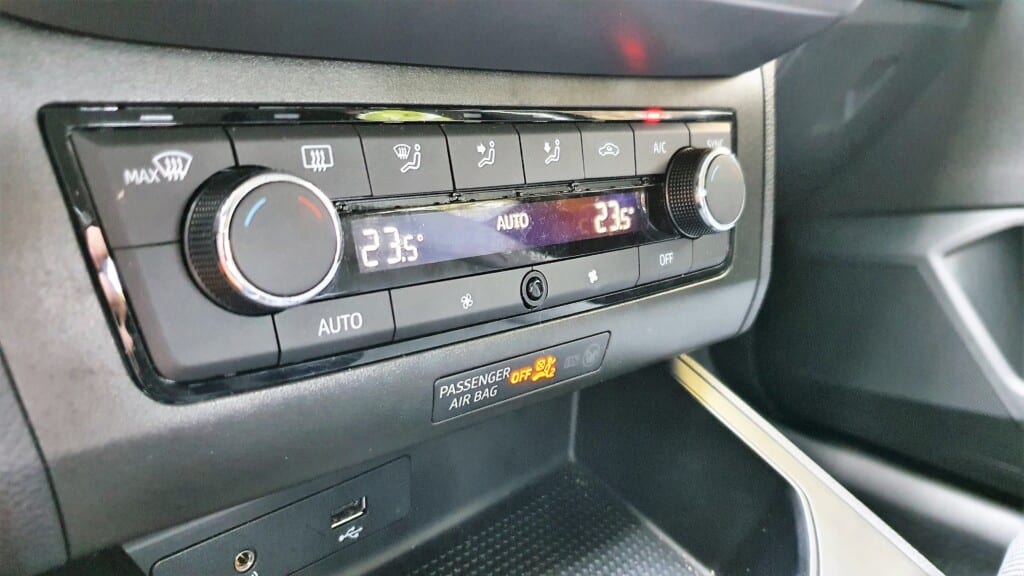
Many people don’t realize how important the cooling fans are to the car’s air conditioning system. The radiator fan is responsible for pulling air across the AC condenser. Therefore, when the air conditioning gets warm or doesn’t seem to work as well, the problem could actually be a bad fan. It might be most noticeable while traveling at lower speeds since there will be less airflow over the condenser.
Yet, this again isn’t a symptom that you can just assume means a bad radiator fan. Most often, there’s a problem with the air conditioning components. However, if you are experiencing other symptoms we’ve mentioned along with this one, it may make sense to check the fans.
5. Whirring Noises
No one wants to hear strange noises coming from the car, yet unusual sounds normally occur whenever there’s a mechanical failure. Being able to discern the various car noises can help you figure out what’s going on. For example, when the radiator cooling fan motor is dying, you may hear a whirring or clicking sound.
Additionally, there could be an issue with the blades that leads to strange noises. Because the cooling fan needs blades to work, they must all remain in their place to be effective. Yet, these blades aren’t immune to damage. If a blade bends or breaks, it could lead to a loud noise that indicates failure. You may also notice some vibration from the imbalanced fan spinning.
What’s The Function Of A Radiator Fan?
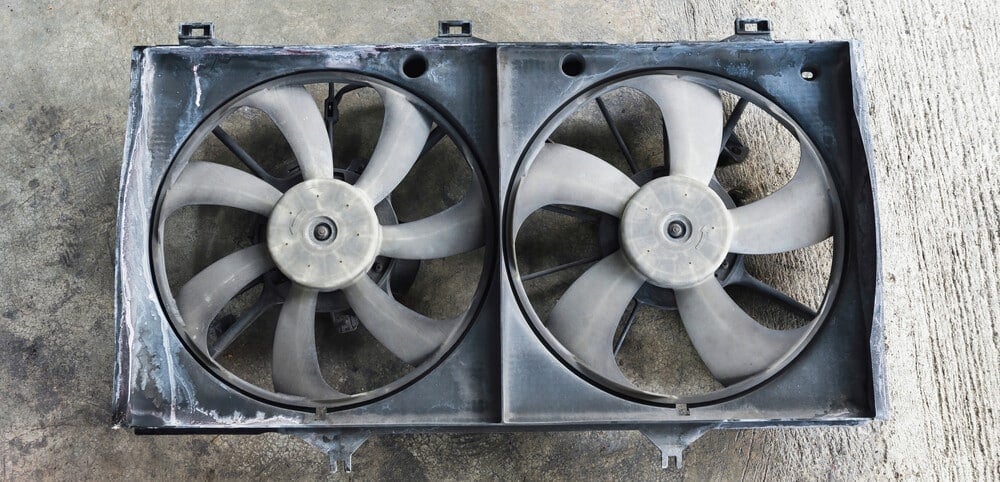
Every vehicle comes equipped with a radiator fan, while some use two for maximum performance. These cooling fans are designed to remove the heat from the coolant that’s circulating through the motor. These fans are also needed to cool down the air conditioning refrigerant, so you get cold AC in the middle of summer. Some people refer to the fan as a condenser fan or the cooling system fan.
Depending on what type of vehicle you drive, there are various kinds of cooling fans. Your car has one of these two options.
- Mechanical: Most older vehicles use a mechanical radiator fan. It’s also found on some rear-wheel drive cars and many of today’s trucks. The mechanical fans contain a built-in clutch allowing the fan to idle if the engine is cold enough. It activates the fan when the coolant temperatures start to climb.
- Electric: Modern vehicles rely on this design, with a fan driven by an electric motor. The ECU determines when the fan should turn on and off.
With either system, as you drive, air moves through the grille to flow over the condenser and through the radiator. The cooler air is going to remove some heat from the coolant and the air conditioning system naturally. Yet, when you stop driving or you aren’t going fast enough to keep the flow up, things are going to start heating up without the right airflow. That’s where the cooling fans jump into action.
The fans kick on to create airflow for the condenser and radiator. It creates enough cool air to remove the heat from the refrigerant and coolant. It can also activate while driving at higher speeds if more airflow is needed, especially when the engine is working hard, such as when you are towing a heavy load and have the air conditioner running.
Where Is The Radiator Fan Located?
The mechanical fan is found mounted to the water pump pulley near the front of the engine. With an electric cooling fan, you will look for the plastic fan blades right behind the radiator. All vehicles today have a cooling fan, while the style of the two may be slightly different.
Depending on what kind of vehicle you drive, you may see two cooling fans on the radiator. This design ensures that there’s some cooling occurring if one of the fans fails.
How Do You Test A Radiator Fan?
The way to test your radiator fan depends on whether it is equipped with a mechanical or electric part. You can find detailed directions in your service manual.
To test an electric fan, you want to let the vehicle run until it reaches normal operating temperature. At this point, the fan should start running. With your multimeter, check the voltage going to the wires. If the multimeter reads around 12 volts, it’s getting enough power.
With a mechanical fan, you need to test the clutch. Perform a visual inspection to ensure nothing is broken or damaged. Wiggle all of the blades and spin the fan to see if it operates freely. Next, look for oil leaks on the bearing seal found on the back of the fan clutch. If there’s oil, you may have a faulty seal or crack.
If you are unsure whether the cooling fan has failed or there’s another part to replace, reach out to a professional mechanic.
How Much Does It Cost To Replace A Radiator Fan?
You may spend between $500 and $750 to replace a radiator fan. The fan alone will cost between $350 and $500, with the labor adding the other $150 to $250. However, some vehicles can cost more, depending on the make and model, as well as the local labor rates.
With the radiator fan mounted to the radiator, you may feel equipped to change it yourself. With some basic tools and generalized mechanical knowledge, this job shouldn’t be too complicated for you. Give yourself a few hours for the repair and you may save money on the labor costs.
Keep in mind that you shouldn’t drive your car if the radiator fan has failed. Without the proper airflow on the radiator, your engine could quickly overheat. Continuing to drive a car with an overheating engine is a surefire way to send your vehicle to the junkyard because of a blown motor.
Can you drive with a bad radiator fan?
No, you should stop driving as soon as you know that the cooling fan is bad. Without the airflow needed to reduce the coolant temperature, the engine is going to overheat. If you drive a car with an overheating engine, you can cause head gasket damage or ruin the engine, both of which are costly to repair.
Does the cooling fan affect the AC?
Yes, the radiator fan is responsible for supplying airflow over the AC condenser. It ensures that the refrigerant is properly cooled off, allowing for cooler air conditioning through the vents. When the fan doesn’t run, the air conditioning is going to seem warmer than normal.
How often do radiator fans need to be replaced?
A properly maintained radiator fan should last at least eight to ten years. You want to keep the cooling fan free of debris and degrease it occasionally. You should also flush the coolant as per the manufacturer’s service recommendations to keep the cooling system working as intended.
How long does it take to replace a radiator fan?
Experienced mechanics may need one to three hours to replace the radiator fan in most vehicles. If you are doing the job at home, you should allow for a little extra time because you probably don’t have the same equipment and expertise.
How long can you drive with a broken radiator fan?
You shouldn’t drive anywhere with a failed radiator fan. The radiator won’t receive the airflow it needs to reduce the coolant temperature. In no time, the engine is sure to overheat. Because you shouldn’t continue running the car when it overheats, you could be left stranded in the middle of nowhere.
When the radiator fan fails, it won’t take long before you figure it out. Between the possibility of having an overheated engine and the lack of air conditioning, this problem is sure to get your attention. It’s also a mechanical failure that needs to be dealt with immediately.
Sure, the cost of replacing a radiator fan is on the costly side. It’s going to dip into your savings a little and probably hurt. Yet, it’s nothing compared to the costs you incur if you continue driving with a bad cooling fan. Save yourself the trouble of needing an engine replacement and fix the defective cooling fan immediately.
Categories: Coolant
